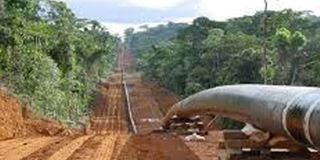Oil project will increase Uganda’s vulnerability to climate change

What you need to know:
- This section of the ESIA confines its assessment to only the operational emissions of CO2 and reaches the following conclusion (on page 8-370).
The discovery of commercial oil deposits in Uganda was made in 2006. It is anticipated that government will earn significant revenue from the inflow of oil money. If collected and utilised responsibly, generated revenues have the potential to uplift Uganda’s economic growth and development.
The East African Crude Oil Pipeline (EACOP) will be running from the oil fields in Hoima, western Uganda to Tanga port in Tanzania transporting crude that will be electrically heated throughout the pipeline.
However, government is ignoring related climate impacts that will arise even when it thinks that oil is a blessing to the country. For instance, an understanding of EACOP must begin with the nature of the material the pipeline would transport, a waxy variety of crude oil that solidifies at ambient temperatures and has to be heated to at least 50 degrees Celsius throughout the 1443km length of the pipeline to arrive at a port for international export, vastly increasing the environmental and economic costs of exploiting Lake Albert area crude oil reserves.
An understanding of the East Africa Crude Oil Pipeline must also begin with the fact that world’s temperature has increased by an estimated 0.9o C as atmospheric levels of carbon dioxide (CO2) have risen from 290 parts per million (ppm) in pre-industrial times to more than 415 ppm in 2019, an atmospheric level of CO2 that has not been experienced since at least three million years ago.
The Intergovernmental Panel on Climate Change (IPCC), is warning that a further increase of world temperature by more than another 0.6o C, a consequence of CO2 levels exceeding 450 ppm, would have far-ranging catastrophic consequences on humanity, including food security and livability of cities.
Section 8.22 of the EACOP ESIA is titled: ‘Climate’ and sub-section 8.22.2 of the ESIA is titled: ‘Project Greenhouse Gas Emissions.’
This section of the ESIA confines its assessment to only the operational emissions of CO2 and reaches the following conclusion (on page 8-370).
The key conclusions related to the EACOP project’s impact on climate include “Direct operational emissions in Uganda once the bulk heaters begin operation will range between 11–18 ktCO2e/a, which represents around 0.014–0.029% of Uganda’s total GHG emissions in 2030: the contribution of EACOP to national emissions is therefore low and will not affect Uganda’s ability to meet its emission reduction target published as part of the UNFCCC’s Paris Agreement.”
Patrick Edema,
[email protected]


